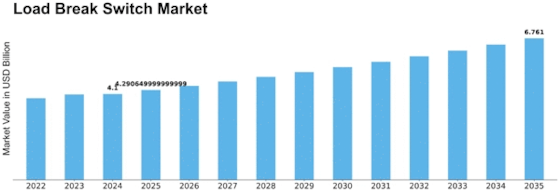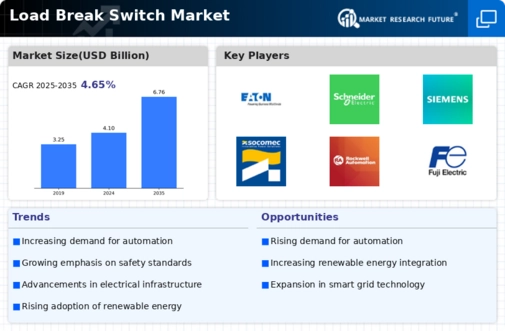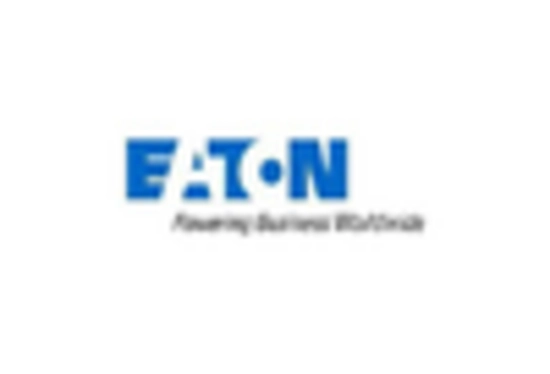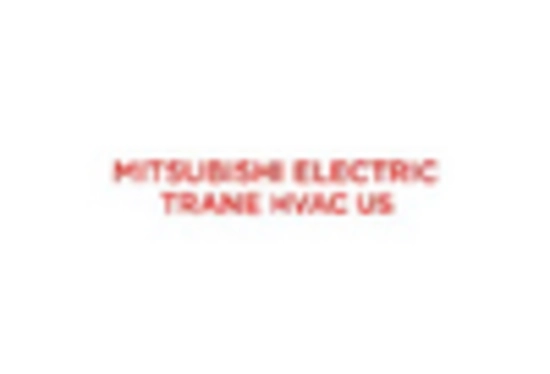-
Executive Summary
-
Scope of the Report
-
Market Definition
- Definition
- Research Objective
- Assumptions
-
2.2
-
Scope of the Study
-
2.2.4
-
Limitations
-
Research Process
- Primary Research
- Secondary
-
Research
-
Market size Estimation
-
Forecast Model
-
Market Landscape
-
3.1
-
Porter’s Five Forces Analysis
-
3.1.2
-
Bargaining power of buyers
-
of substitutes
-
4
-
Market Dynamics
-
Restraints
-
Threat of New Entrants
-
Bargaining power of suppliers
-
Threat
-
Segment rivalry
-
Value Chain/Supply Chain Analysis
-
Introduction
-
Market Drivers
-
Market
-
Market Opportunities
-
Market Trends
-
Global Load Break Switch Market,
-
By Type
-
Introduction
-
Gas-Insulated
- Market Estimates & Forecast,
- Market Estimates & Forecast by Region, 2023-2032
-
Vacuum-Insulated
- Market Estimates & Forecast
-
5.3.1
-
Market Estimates & Forecast, 2023-2032
-
by Region, 2023-2032
-
Air-Insulated
- Market Estimates & Forecast,
- Market Estimates & Forecast by Region, 2023-2032
-
Oil-Immersed
- Market Estimates & Forecast
-
5.5.1
-
Market Estimates & Forecast, 2023-2032
-
by Region, 2023-2032
-
Global Load Break Switch Market, By Voltage Type
-
6.1
-
Introduction
-
Below 11 kV
- Market Estimates & Forecast,
- Market Estimates & Forecast by Region, 2023-2032
-
11–33
- Market Estimates & Forecast, 2023-2032
- Market Estimates & Forecast
-
kV
-
by Region, 2023-2032
-
33–60 kV
- Market Estimates & Forecast,
- Market Estimates & Forecast by Region, 2023-2032
-
Global Load
-
Break Switch Market, By Installation Type
-
Introduction
-
Outdoor
- Market Estimates & Forecast
-
7.2.1
-
Market Estimates & Forecast, 2023-2032
-
by Region, 2023-2032
-
Indoor
- Market Estimates & Forecast, 2023-2032
-
7.3.2
-
Market Estimates & Forecast by Region, 2023-2032
-
Global Load Break Switch Market,
-
By End-Use Industries
-
Introduction
-
Utilities
- Market Estimates & Forecast,
- Market Estimates & Forecast by Region, 2023-2032
-
Commercial
- Market Estimates & Forecast
-
8.3.1
-
Market Estimates & Forecast, 2023-2032
-
by Region, 2023-2032
-
Industrial
- Market Estimates & Forecast,
- Market Estimates & Forecast by Region, 2023-2032
-
Global Load
-
Break Switch Market, By Region
-
Introduction
-
North America
- Market
- Market Estimates & Forecast
- Market Estimates & Forecast by Voltage Type, 2023-2032
- Market
- U.S.
- Canada
-
Estimates & Forecast, 2023-2032
-
by Type, 2023-2032
-
9.2.4
-
Market Estimates & Forecast by Installation Type, 2023-2032
-
Estimates & Forecast by End-use industries, 2023-2032
-
Forecast, 2023-2032
-
9.2.6.3
-
Market Estimates & Forecast by Voltage Type, 2023-2032
-
Forecast by Installation Type, 2023-2032
-
by End-use industries, 2023-2032
-
Forecast, 2023-2032
-
9.2.7.3
-
Market Estimates & Forecast by Voltage Type, 2023-2032
-
Forecast by Installation Type, 2023-2032
-
by End-use industries, 2023-2032
-
Europe
- Market Estimates & Forecast,
- Market Estimates & Forecast by Type, 2023-2032
- Market
- Market Estimates & Forecast
- Market Estimates & Forecast by End-use
- U.K
- Germany
- Spain
- Italy
- Rest of Europe
-
Estimates & Forecast by Voltage Type, 2023-2032
-
by Installation Type, 2023-2032
-
industries, 2023-2032
-
9.3.6.2
-
Market Estimates & Forecast by Type, 2023-2032
-
Forecast by Voltage Type, 2023-2032
-
by Installation Type, 2023-2032
-
industries, 2023-2032
-
9.3.7..2
-
Market Estimates & Forecast by Type, 2023-2032
-
Forecast by Voltage Type, 2023-2032
-
by Installation Type, 2023-2032
-
industries, 2023-2032
-
9.3.8.2
-
Market Estimates & Forecast by Type, 2023-2032
-
Forecast by Voltage Type, 2023-2032
-
by Installation Type, 2023-2032
-
industries, 2023-2032
-
9.3.9.2
-
Market Estimates & Forecast by Type, 2023-2032
-
Forecast by Voltage Type, 2023-2032
-
by Installation Type, 2023-2032
-
industries, 2023-2032
-
Forecast, 2023-2032
-
9.3.10.3
-
Market Estimates & Forecast by Voltage Type, 2023-2032
-
Forecast by Installation Type, 2023-2032
-
by End-use industries, 2023-2032
-
Asia Pacific
- Market Estimates & Forecast,
- Market Estimates & Forecast by Type, 2023-2032
- Market
- Market Estimates & Forecast
- Market Estimates & Forecast by End-use
- China
- Japan
- Australia
- Rest of Asia Pacific
-
Estimates & Forecast by Voltage Type, 2023-2032
-
by Installation Type, 2023-2032
-
industries, 2023-2032
-
9.4.6.2
-
Market Estimates & Forecast by Type, 2023-2032
-
Forecast by Voltage Type, 2023-2032
-
by Installation Type, 2023-2032
-
industries, 2023-2032
-
9.4.7.2
-
Market Estimates & Forecast by Type, 2023-2032
-
Forecast by Voltage Type, 2023-2032
-
by Installation Type, 2023-2032
-
industries, 2023-2032
-
Estimates & Forecast by Voltage Type, 2023-2032
-
Forecast by Installation Type, 2023-2032
-
by End-use industries, 2023-2032
-
Forecast, 2023-2032
-
9.4.9.3
-
Market Estimates & Forecast by Voltage Type, 2023-2032
-
Forecast by Installation Type, 2023-2032
-
by End-use industries, 2023-2032
-
Rest of the World
- Market Estimates & Forecast,
- Market Estimates & Forecast by Type, 2023-2032
- Market
- Market Estimates & Forecast
- Market Estimates & Forecast by End-use
-
Estimates & Forecast by Voltage Type, 2023-2032
-
by Installation Type, 2023-2032
-
industries, 2023-2032
-
Competitive Landscape
-
Company Profile
-
ABB (Switzerland)
- Product/Services Offering
- Financial Overview
- Strategy
- SWOT Analysis
-
11.1.1
-
Company Overview
-
11.1.4
-
Key Developments
-
Eaton
- Company Overview
- Product /Services Offering
- Financial
- Key Developments
- Strategy
- SWOT Analysis
- Company Overview
- Product /Services Offering
- Key Developments
- Strategy
- SWOT
-
(Ireland)
-
Overview
-
11.3
-
Schneider (France)
-
11.3.3
-
Financial Overview
-
Analysis
-
GE (U.S.)
- Company Overview
- Product /Services Offering
- Key Developments
- Strategy
- SWOT
-
11.4.3
-
Financial Overview
-
Analysis
-
Siemens (Germany)
- Company Overview
- Product /Services Offering
- Key Developments
- Strategy
- SWOT
-
11.5.3
-
Financial Overview
-
Analysis
-
Socomec (France)
- Company Overview
- Product /Services Offering
- Key Developments
- Strategy
- SWOT
-
11.6.3
-
Financial Overview
-
Analysis
-
Rockwell Automation (U.S.)
- Company Overview
- Product
- Financial Overview
- Key Developments
- SWOT Analysis
-
/Services Offering
-
11.7.5
-
Strategy
-
Fuji Electric (Japan)
- Company Overview
- Financial Overview
- Key Developments
- SWOT Analysis
-
11.8.2
-
Product /Services Offering
-
11.8.5
-
Strategy
-
Powell Electric (U.S.)
- Company Overview
- Financial Overview
- Key Developments
- SWOT Analysis
-
11.9.2
-
Product /Services Offering
-
11.9.5
-
Strategy
-
Ensto (Finland)
- Company Overview
- Financial Overview
- Key Developments
-
11.10.2
-
Product /Services Offering
-
11.10.5
-
Strategy
-
List of Tables
-
Global Load Break Switch Market:
-
By Region, 2023-2032
-
North America Load Break Switch Market: By Country,
-
Europe Load Break Switch Market: By Country, 2023-2032
-
Table
-
Asia-Pacific Load Break Switch Market: By Country, 2023-2032
-
RoW
-
Load Break Switch Market: By Country, 2023-2032
-
Global Load Break Switch
-
Market, by Type, By Regions, 2023-2032
-
North America Load Break Switch
-
Market, by Type, By Country, 2023-2032
-
Europe Load Break Switch Market,
-
by Voltage Type, By Country, 2023-2032
-
Asia-Pacific Load Break Switch
-
Market by Type, By Country, 2023-2032
-
RoW Load Break Switch Market
-
by Type, By Country, 2023-2032
-
Global Load Break Switch Market by End-Use
-
Industries Market: By Regions, 2023-2032
-
North America Load Break Switch
-
Market by End-Use Industries: By Country, 2023-2032
-
Europe Load Break Switch
-
Market by End-Use Industries: By Country, 2023-2032
-
Asia Pacific Load Break
-
Switch Market by End-Use Industries: By Country, 2023-2032
-
RoW Load Break Switch
-
Market by End-Use Industries: By Country, 2023-2032
-
Global Load Break Switch
-
Market, by Installation Type, By Regions, 2023-2032
-
North America Load Break
-
Switch Market, by Installation Type, By Country, 2023-2032
-
Europe Load Break Switch
-
Market, by Installation Type, By Country, 2023-2032
-
Asia Pacific Load Break
-
Switch Market, by Installation Type, By Country, 2023-2032
-
RoW Load Break Switch
-
Market, by Installation Type, By Country, 2023-2032
-
Global Load Break Switch
-
Market: By Region, 2023-2032
-
Global Load Break Switch Market: By Region,
-
Global Load Break Switch Market: By Region, 2023-2032
-
Table
-
North America Load Break Switch Market, By Country
-
North America Load Break
-
Switch Market, by Type
-
North America Load Break Switch Market, by End-Use
-
Industries
-
North America Load Break Switch Market, By Installation Type
-
Table
-
North America Load Break Switch Market, By End-User
-
Europe: Load Break Switch
-
Market, By Country
-
Europe: Load Break Switch Market, by Type
-
Table
-
Europe: Load Break Switch Market, by End-Use Industries
-
Europe: Load Break Switch
-
Market, By Installation Type
-
Europe: Load Break Switch Market, By End-User
-
Table
-
Asia-Pacific: Load Break Switch Market, By Country
-
Asia-Pacific: Load Break
-
Switch Market, by Type
-
Asia-Pacific: Load Break Switch Market, by End-Use
-
Industries
-
Asia-Pacific: Load Break Switch Market, By Installation Type
-
Table
-
Asia-Pacific: Load Break Switch Market, By End-User
-
RoW: Load Break Switch
-
Market, By Region
-
RoW Load Break Switch Market, by Type
-
RoW
-
Load Break Switch Market, by End-Use Industries
-
RoW Load Break Switch
-
Market, By Installation Type
-
RoW Load Break Switch Market, By End-User
-
List of Figures
-
RESEARCH PROCESS OF MRFR
-
TOP
-
DOWN & BOTTOM UP APPROACH
-
MARKET DYNAMICS
-
IMPACT ANALYSIS: MARKET
-
DRIVERS
-
IMPACT ANALYSIS: MARKET RESTRAINTS
-
PORTER’S FIVE FORCES
-
ANALYSIS
-
VALUE CHAIN ANALYSIS
-
GLOBAL LOAD BREAK SWITCH MARKETSHARE,
-
BY TYPE, 2023 (%)
-
GLOBAL LOAD BREAK SWITCH MARKET, BY TYPE, 2023-2032
-
(USD MILLION)
-
GLOBAL LOAD BREAK SWITCH MARKETSHARE, BY INSTALLATION
-
TYPE, 2023 (%)
-
GLOBAL LOAD BREAK SWITCH MARKET, BY INSTALLATION TYPE,
-
GLOBAL LOAD BREAK SWITCH MARKET SHARE
-
(%), BY REGION, 2023
-
GLOBAL LOAD BREAK SWITCH MARKET, BY REGION, 2023-2032
-
(USD MILLION)
-
NORTH AMERICA LOAD BREAK SWITCH MARKETSHARE (%), 2023
-
FIGURE
-
NORTH AMERICA LOAD BREAK SWITCH MARKETBY COUNTRY, 2023-2032 (USD MILLION)
-
FIGURE
-
EUROPE LOAD BREAK SWITCH MARKETSHARE (%), 2023
-
EUROPE LOAD BREAK SWITCH
-
MARKETBY COUNTRY, 2023-2032 (USD MILLION)
-
ASIA PACIFIC LOAD BREAK
-
SWITCH MARKETSHARE (%), 2023
-
ASIA PACIFIC LOAD BREAK SWITCH MARKETBY
-
COUNTRY, 2023-2032 (USD MILLION)
-
REST OF THE WORLD LOAD BREAK SWITCH MARKETSHARE
-
(%), 2023
-
REST OF THE WORLD LOAD BREAK SWITCH MARKETBY COUNTRY, 2023-2032
-
(USD MILLION)










Leave a Comment